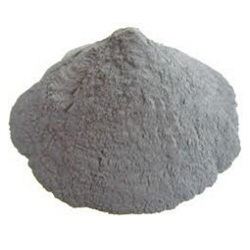Appearance yellow powdery solid Molar mass 323.5 g/mol Density 3.78 g/cm³ | Formula Sb2O5 Melting point 380 °C | |
 | ||
Antimony pentoxide (Sb2O5) is a chemical compound of antimony and oxygen. It always occurs in hydrated form, Sb2O5·nH2O. It contains antimony in the +5 oxidation state.
Contents
Structure
Antimony pentoxide has the same structure as the B form of niobium pentoxide and can be derived from the rutile structure, with antimony coordinated by six oxygens in a distorted octahedral arrangement. The SbO6 octahedra are corner- and edge-sharing.
Preparation
The hydrated oxide is prepared by hydrolysis of antimony pentachloride; or by acidification of potassium hexahydroxoantimonate(V). It may also be prepared by oxidation of antimony trioxide with nitric acid.
Uses
It finds use as a flame retardant in ABS and other plastics, a flocculant in the production of titanium dioxide and is sometimes used in the production of glass, paint and adhesives.
It is also used as an ion-exchange resin for a number of cations in acidic solution including Na+ (especially for their selective retentions); and as a polymerization and oxidation catalyst.
Properties and reactions
The hydrated oxide is insoluble in nitric acid, but dissolves in concentrated potassium hydroxide solution to give potassium hexahydroxoantimonate(V), KSb(OH)6.
When heated at 700 °C the yellow hydrated pentoxide converts to an anhydrous white solid with a formula Sb6O13 containing both Sb(III) and Sb(V). Heating at 900 °C produces a white insoluble powder of Sb2O4 of both α and β forms. The β form consists of Sb(V) in octahedral interstices and pyramidal Sb(III) O4 units. In these compounds, Sb(V) atom is octahedrally coordinated to six –OH groups.
The pentoxide can be reduced to antimony metal by heating with hydrogen or potassium cyanide.
